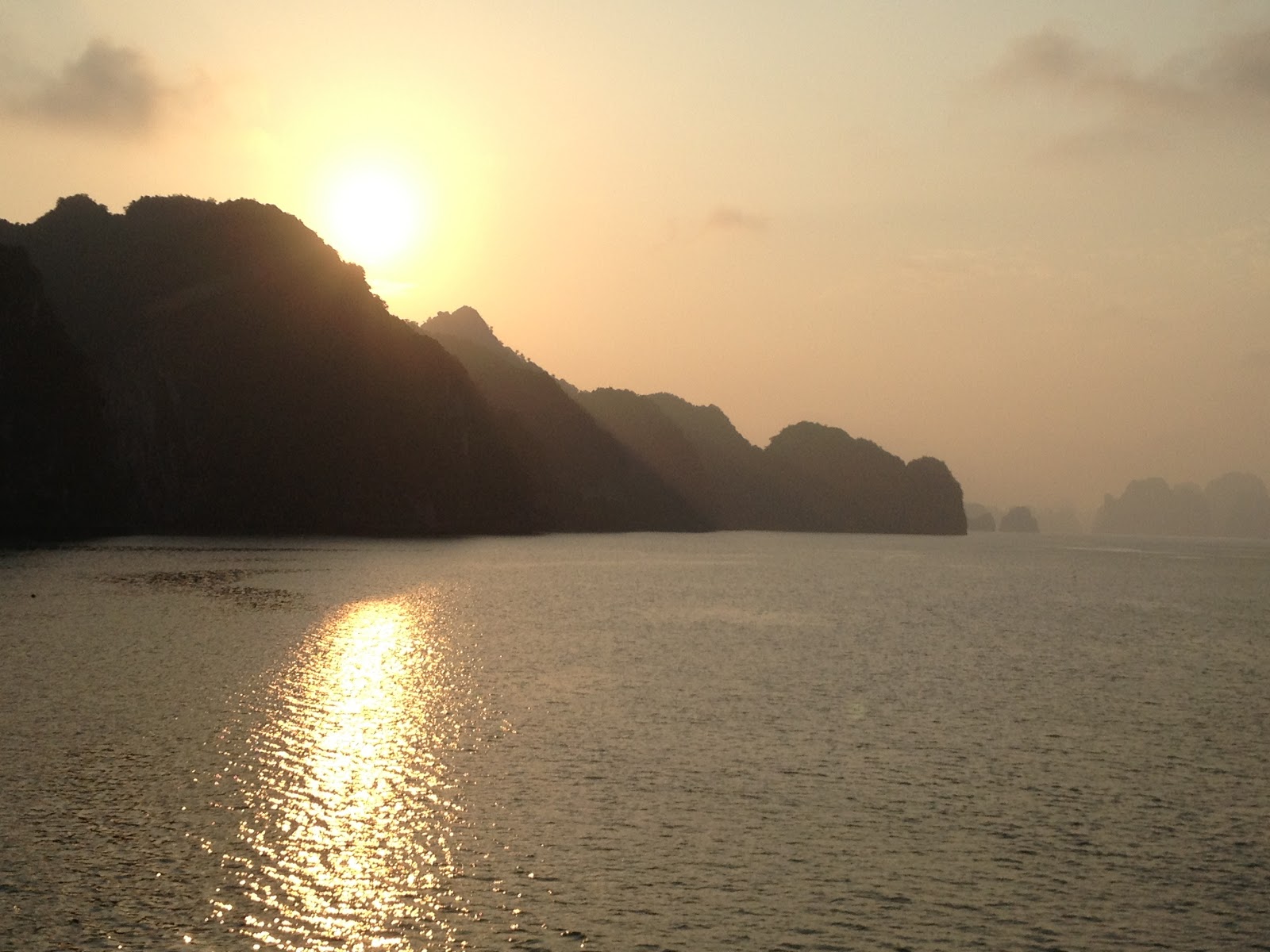By Perrin
Koh Tao is a tiny beautiful island
in Thailand and is famous for its beautiful scuba diving and snorkeling. To get
to the island, you have to fly to Koh Samui, a bigger island south of Koh Tao.
Then you take a ferry from Koh Samui to Koh Tao. Koh Tao isn’t as populated or
touristy as Koh Samui, but it has many foreigners who come for scuba diving,
snorkeling and the beautiful island scenery. We were some of them.
When my uncle E-pi,
Carly and I had settled into our hotel room and my parents into theirs, we rented
mopeds and drove down to the main town in Koh Tao, where the boats dock, to
rent snorkel equipment and arrange scuba diving for the next day.
The next
morning, we got to the scuba shop after a great breakfast at a café called “Zest,”
feeling a little nervous. My parents were already there because they were doing
a diving refresher course. A woman
walked up to us and happily said, “Hi! I’m Sarah and I’m going to be your
instructor today.” She brought us upstairs to a little room and taught us the
rules of scuba diving and about the equipment. Then we tried on the gear to see
what size we were. When everybody was ready and all the equipment was in the
boat, we got into a small long tail boat that took us to a dive boat. We were
going diving at a place called “Japanese Gardens,” and on our way to the site,
Sarah told us about it. She explained that we would see many different kinds of
fish and since we couldn’t talk underwater, we would have to use hand signs to
communicate and to describe to each other what kind of fish we saw. She told us
that there were TONS of Sargent Major fish, little black and white and yellow
striped fish, and little fish that nibbled your dead skin.



She also told us
about trigger fish that are the shape of a football but much bigger and have a
fin that goes up and down when they are angry or scared. If you notice a trigger fish with a fin that
is going up and down, you don’t want to go too close. If the fish feels
threatened, it might charge and bite with its round, funny buckteeth.
When we were
finally all ready in our scuba suits and vests and tanks, we jumped in the
water.
It was about 10 meters deep, so I
felt a little scared, but once I looked down and saw the beautiful fish, I
wasn’t scared anymore. We then swam to
the beach where we could stand in the water. We went over the rules again and
the usage of our equipment and then started swimming deeper to where the bigger
coral and fish were.
 |
| Going over the rules |
 |
| Carly |
 |
| Me |
 |
| Carly |
 |
| My uncle E-pi |
 |
| Me |
It’s
surprisingly difficult to balance under water and to control your buoyancy so
you don't hit any coral, so Sarah had to hold on to our tanks and guide us at
the beginning. We saw beautiful sea anemones with fish that look like clownfish
swimming amongst the anemone’s tentacles.
 |
| A sea anemone |
 |
| A barrel sponge |
 |
| A fake clownfish in a sea anemone |
There were also corals that looked
like bonsais, and that is why the dive site was called Japanese Gardens. There
were banner fish, angelfish, butterfly fish, rabbit fish, parrot fish and
thousands of other tiny, colorful fish.
 |
| A big Grouper |
 |
| A banner fish |
On my second dive we were lucky
enough to see a moray eel! It swam all the way out of the rock, a behavior that
apparently is rare. There was also a huge trigger fish that was a little scary.
Almost every square foot of coral had little Christmas Tree worms that look
like little colorful Christmas trees stuck to the rock. When something goes
close to them or if you disturb the water around them, they immediately suck
themselves into the coral and disappear. They are all kinds of colors but most
often they are orange, yellow, purple, blue, or tan. I loved waving the water
around them and watching them retreat into the coral.
 |
Christmas tree worms
|
We didn't see many sea
stars, but the one kind that we did see was called the Indian Cushion sea star.
It was given that name because it actually does look like a cushion in a vague
shape of a star.
 |
| Indian cushion sea star |
Everything underwater was unbelievably beautiful and looked
like it came out of a movie!
Scuba diving was
such a fantastic experience and I am so glad we tried it in Koh Tao. Although
there were some difficult things about diving, overall it was amazing to breath
underwater like a fish. It was also a chance to meet new people from different
countries and learn about them and how they got into diving. Most of the people
on our boat were British, Scottish and Irish, so we heard a lot of different
English accents. I am looking forward to
diving again some time in the future!
 |
| My dad |
 |
| My mom and dad |




























































